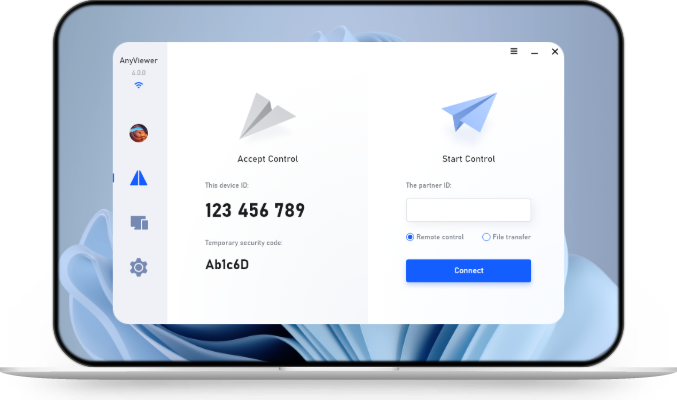2025 The Best Free Software to Monitor and Troubleshoot Your PC
This article explores the best free software for monitoring and troubleshooting your PC, covering the best tools and benefits. Our expert insights will enhance your remote monitoring experience.
What is the best PC monitoring app?
Today, our PCs are the backbone of our productivity, entertainment, and communication. Whether you're a gamer, a professional, or just someone who uses a computer daily, ensuring that your PC runs smoothly is crucial. But with so many components working together, things can go wrong, sometimes without warning. We’ve all been there—your PC starts running slow, apps begin crashing, or strange noises come from your hardware. This is where monitoring and troubleshooting software comes into play. Not only that, but it helps make working remotely easier.
And the best part? You don’t have to break the bank to keep your PC in top shape. In this guide, we’ll explore the best free software available to monitor and troubleshoot your PC, ensuring you can keep your system running smoothly without spending a dime.
The best free software to monitor and troubleshoot your PC [4 options]
Let’s dive into the best free software to monitor and troubleshoot your PC. These tools offer a range of features to keep your system in check, all without costing you a penny.
Option 1. AnyViewer
Now, while there are many tools that are great for monitoring computers, there is one piece of software - AnyViewer - that beats the rest when it comes to troubleshooting.AnyViewer will be your first choice. It is remote desktop software that enables users to efficiently monitor multiple remote work computers at the same time, gaining real-time insight into their activities. AnyViewerisn’t just about remote access; it’s a full-fledged support solution. With AnyViewer, you can remotely access another PC, troubleshoot issues, transfer files, and even collaborate with others—all from the comfort of your own device. Its robust security features ensure that your data remains safe, making it an excellent choice for both personal and professional use.
AnyViewer's screen wall feature makes it easy to monitor multiple computers at once. By customizing your screen wall and adding the devices you want, you can easily view and manage screens with just one click, streamlining your management tasks. Whether you're an IT technician or a team leader, AnyViewer lets you monitor and troubleshoot issues on several computers simultaneously, boosting efficiency.
Pros:
- User-friendly Interface: The software is designed to be simple and easy to navigate, so even beginners can use it without any hassle.
- Higher Security: It uses strong encryption and two-factor authentication to keep your data safe during remote sessions, ensuring only authorized users can access the system.
- Screen Monitoring and Control: You can either watch what’s happening on the remote screen or take full control of the mouse and keyboard, depending on your needs.
- Privacy Mode: Privacy Mode lets you black out the remote screen and disable the keyboard, keeping sensitive activities private from anyone nearby.
- Fast and Stable Connection: The software ensures quick and reliable monitoring, so you can keep an eye on remote systems without interruptions.
- Large-Scale Deployment: Supports large-scale deployment across numerous devices, making it a robust solution for businesses with extensive IT infrastructures. Whether you manage a few systems or dozens, it scales efficiently to meet your needs.
- Convenient Mobile Access: The mobile apps let you access and control systems from anywhere, offering flexibility when you’re on the go.
- Flexible Pricing Plans: There are pricing options to fit businesses of all sizes, ensuring you get the features you need at a price that works for you.
- Comprehensive Remote Features: Supports remote control, screen sharing, file transfer, multi-monitor support, and more useful features. These make it a versatile tool for various remote work tasks. These features enhance collaboration, simplify management, and improve overall efficiency.
Cons:
- Compatibility is restricted to Windows, Windows Server, iOS, and Android platforms.
Option 2. Speccy
Developed by the same team behind CCleaner, Speccy offers a more user-friendly interface, providing an overview of your system’s hardware. It’s great for quickly checking temperatures and ensuring your components aren’t overheating. Speccy’s simplicity makes it an excellent choice for users who need essential monitoring without the technical jargon.
Pros:
- Comprehensive Information: Speccy offers detailed information about your computer's hardware, including CPU, RAM, motherboard, graphics card, storage devices, optical drives, and more.
- User-Friendly Interface: The interface is clean and easy to navigate, making it accessible for both beginners and advanced users.
- Temperature Monitoring: Speccy provides real-time temperature readings for critical components like the CPU and GPU, which is useful for monitoring system health.
- Detailed Reports: Speccy allows users to save detailed system reports in multiple formats (XML, TXT, or snapshot) for future reference or troubleshooting.
Cons:
- Limited Features in Free Version: While the free version of Speccy offers a lot of information, some advanced features are only available in the paid version.
- No Real-Time Alerts: Speccy provides temperature monitoring but lacks real-time alerts for overheating or other critical issues.
- Minimal Customization: The software offers limited options for customization, such as changing how information is displayed or organizing data in different ways.
- Potentially Overwhelming for Novices: The detailed information provided might be overwhelming for users who are not familiar with computer hardware.
- No Built-In Benchmarking: Unlike some other system information tools, Speccy does not offer built-in benchmarking features to test the performance of your components.
- Occasional Inaccuracies: In rare cases, Speccy might not accurately detect or display information for certain hardware components, especially with very new or uncommon devices.
Option 3. HWiNFO
HWiNFO is a robust system monitoring tool that provides detailed information about your hardware components. From your CPU to your GPU and everything in between, HWiNFO offers real-time monitoring, so you can keep track of temperatures, voltages, and fan speeds. It’s particularly useful for users who want a deep dive into their system’s inner workings.
Pros:
- Free to Use: HWiNFO is completely free with no paid version, offering all its features without restrictions.
- Extensive Hardware Information: HWiNFO delivers in-depth details about every component in your system, including the CPU, GPU, RAM, motherboard, storage, and more. It's among the most feature-rich tools out there.
- Real-Time Monitoring: The software provides real-time monitoring of temperatures, voltages, fan speeds, and other critical system metrics, making it ideal for keeping tabs on system health.
- Customizable Alerts: HWiNFO allows users to set custom alerts for various parameters, such as temperature thresholds, which can help prevent hardware damage.
Cons:
- Complex Interface: The user interface can be overwhelming for beginners due to the sheer amount of data and options available, making it less intuitive than some simpler tools.
- Resource-Intensive: HWiNFO can be more resource-intensive, especially when running continuous real-time monitoring, which may impact system performance on lower-end hardware.
- No Benchmarking Features: While HWiNFO provides detailed monitoring, it doesn’t include built-in benchmarking tools to test hardware performance.
- Learning Curve: Due to its depth and the complexity of options, there’s a learning curve for users who are not familiar with advanced hardware monitoring and diagnostics.
- No Cross-Platform Support: HWiNFO is only available for Windows, limiting its use to those who need to monitor systems running on other operating systems.
Option 4. CPU-Z
If you’re serious about getting to know the ins and outs of your PC’s hardware, CPU-Z is your go-to tool. This lightweight software provides detailed information about your CPU, motherboard, and memory. The application provides detailed data, including individual core speeds for multi-core CPUs, cache sizes, chipset information, and more. CPU-Z goes further by offering similar diagnostic details for the computer's RAM, external graphics card, and motherboard. It’s perfect for users who want to keep a close eye on their system’s performance and ensure everything is running as it should.
Pros:
- Detailed CPU Information: CPU-Z provides comprehensive details about your processor, including its name, architecture, core voltage, clock speed, and cache levels. It also offers information on the number of cores and threads, making it useful for understanding your CPU’s capabilities.
- User-Friendly Interface: The interface is straightforward and easy to navigate, displaying key information in organized tabs, which makes it accessible even for beginners.
- Lightweight and Fast: The software is very lightweight and runs quickly, with minimal impact on system resources. This makes it ideal for quick checks without slowing down your computer.
- Free to Use: CPU-Z is completely free with no premium version, offering all its features at no cost
- Validation Feature: CPU-Z includes an online validation tool that allows users to upload their system’s information to a database, which can be useful for sharing system specs or comparing configurations with others.
Cons:
- Limited Hardware Information: While CPU-Z excels at providing detailed information about the CPU, its coverage of other components like the GPU, RAM, and motherboard is less extensive compared to other tools like HWiNFO or Speccy.
- No Temperature Monitoring: Unlike some other system information tools, CPU-Z does not offer temperature monitoring, limiting its usefulness for users who need to keep an eye on system temperatures.
- Basic Reporting: The reporting features in CPU-Z is relatively basic, with limited options for saving or exporting the data. Advanced users may find the lack of detailed reporting options restrictive.
- No Customization Options: CPU-Z offers very little in terms of customization, such as changing the display of information or setting alerts, which might be a limitation for more advanced users.
- Windows-Only: CPU-Z is only available for Windows, so users on other operating systems will need to look for alternatives.
Conclusion
To keep your PC running smoothly without spending a fortune, exploring the best free software to monitor and troubleshoot your PC is essential. Tools like AnyViewer, Speccy, HWiNFO, and CPU-Z each offer unique features to help you maintain peak performance and address issues effectively. AnyViewer excels with its remote support capabilities, while Speccy and HWiNFO provide detailed hardware insights. By leveraging these free software solutions, you ensure your PC remains in top shape, enabling efficient troubleshooting and monitoring at no cost. With these tools, you have everything you need to keep your system running flawlessly.

